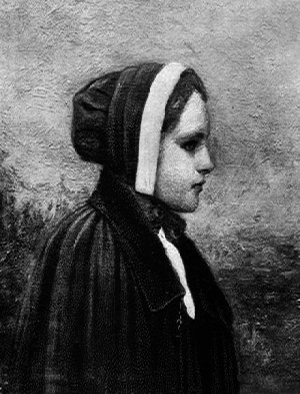The History of the Salem Witch Trials
The ugly, sad, yet fascinating facts about the infamous trials covered in one piece.

Photo Courtesy of Unknown author, Public domain, via Wikimedia Commons
An illustration of Bridget Bishop, first of the 19 people hanged during the trials

You probably have heard of the Salem witch trials at least once in your life, whether through a movie, a book, or word-of-mouth. These trials are well-known and many people associate them with Halloween or Halloween-related media. However, not enough people take the time to learn about the history of the trials, despite their being a very sad, but interesting, chapter in colonial U.S History.
The Salem Witch Trials took place in Salem Village, Massachusetts, during the late winter and spring of 1692. After claims that two young girls had been possessed by the devil, local townspeople, one by one, were accused of witchcraft. A fear and paranoia-ridden Salem started holding the accused people in custody and held trials to determine whether they were guilty or not.
During the months leading up to the trials, more than 200 women, children, and men were accused. Thankfully only 19 of those were executed by hanging, and 5 more died while waiting in custody. Even two dogs were executed due to suspicion of their involvement in witchcraft.

The very first victim to be executed was Bridget Bishop. Though not the first to be accused, she was the first to be tried in court and sentenced to death. Her conviction was founded on rumors that she was responsible for the death of her first two husbands, as well as the death of multiple people in the community, and that she appeared as a specter to terrorize members of the community. Many historians theorize she was an easy target because her behavior wasn’t deemed proper at the time. She was known for hosting drinking and gambling parties and publicly disagreeing with her husband. She was hanged the 10th day of June, 1692.
Another victim that suffered a tragic death was a farmer named Giles Corey. He was an 81-year-old man who was also accused of witchcraft, but instead of pleading guilty or innocent, he decided to stay silent about the accusations. This led the town court to apply an old and terrifying English law called “Peine forte et dure”, which is French for ” Strong and hard punishment”. The practice consists of death by placing heavy weights on top of a person. The interrogators placed stone weights on top of Corey, and he died after three days of the punishment.
Most of the evidence used to convict the accused would not be considered reliable today. For example, testimonies from people saying they

were visited by the specter of someone was considered sufficient enough for someone to be found guilty. Most of the victims that were convicted were sentenced not because of concrete and factual evidence, but because of rumors and hearsay. And most of the jurors in the trials were family members of the accusers, which only further complicated the matters. These trials were by no means fair.
The city of Salem has since opened a memorial to honor all the people that were victims of the Salem Witch Trials, it opened on the 325th anniversary of the first of three mass executions. The memorial consists of a long slope that leads down to the previously mentioned site, with an area enclosed by a wall which has the names of all the 19 people that were hung.
The Salem witch trials were a tragic series of events in American history. These people were victims of paranoia and fear of the unknown and the supernatural, and it is a true vindication of their innocence that people still honor them in Salem. All Americans should be conscious of this history and those who were victims so we as a nation can ensure history never repeats itself.

